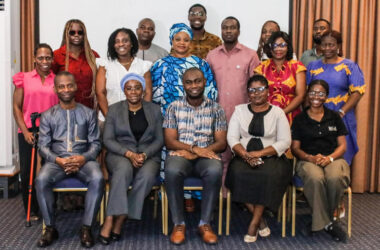
The people of Adamrobe in the Eastern Region, for a long time, believed that the mystery behind 50 members of their community, some from the same family, being hearing impaired was a curse.
Scientific research has, however, proved otherwise, tracing the disability to genetic heredity.
The community, whose main source of livelihood is farming, is located in a bowl-shaped valley at the foot of the Akuapem Hills.
The community Secretary, Mr Stephen Akrofi, told the Daily Graphic that the most up-to-date records had identified 50 hearing impaired, mostly dumb, out of the 1,800 indigenes in the village.
That figure is double the global average, according to the World Health Organisation (WHO) projection, which estimates that five out of every 1,000 children worldwide are either born with hearing loss or acquire it soon after birth.
Some of the indigenes believe the condition of being hearing impaired, which could be found in a family made up of father, mother and children, can be the result of a curse, as the adjoining villages have not reported any similar disorders.
The Gyasehene of Adamrobe, Nana Kwame Ayeh, said an age-old custom of marrying within the community, coupled with the lack of access to medical facilities and immunisation in the past, could have resulted in the large number of deaf and mute people in the area.
He explained to the Daily Graphic that such had been the belief, that in 1975, the then Chief of the village, Nana Kwakwa Asiampong II, prohibited marriages between two deaf persons in order to reduce the number of deaf people in the village.
However, a Professor of Clinical Audiology, Professor Geoffrey Kwablah Amedofu, said scientific researches conducted by academia, with particular interest in sign language and also to trace a medical route in 1975, 1995 and 2001, all came up with findings linking the challenge to genetic inheritance.
Prof. Amedofu, who is a consultant at the Korle Bu Teaching Hospital, proposed the clinical screening of prospective couples, particularly the hearing impaired, to find out if they had the genes that cause the disability, so that they could be stopped from marrying and passing the genes on to their children.
The myths
One explanation the inhabitants offered for the unusually large deaf population in Adamrobe was that the town was spiritually being ruled by a deaf god who made the offspring of any couple who had done something to offend it deaf.
They cited the manner in which the fetish priestess, the messenger of the community god, danced when possessed by the spirit as proof of the existence of such a deity.
A second myth has it that there is a stream at the outskirts of the town whose water must not be fetched by anyone for domestic purposes because of its sacred nature.
The inhabitants are not even allowed to go near the stream on certain days of the week, and those who dare to break the taboo are punished with deaf children.
Yet a third myth says that long ago, there was a handsome, strong, deaf young man in the town with whom every woman and girl, irrespective of whether she was married or not, sought to have a child because of his charming looks and that might have resulted in that disability.
Medical
Attracted by the unusual number of hearing-impaired people in a single community, with many related to one another, J. B. David, a British ear, nose and throat consultant, together with a team of medical experts, was asked by the Ministry of Health to research into the causes of the condition in 1970.
The findings of that research revealed that the high incidence of deafness was hereditary.
In 1995, another joint project by the Kumasi Centre for Collaborative Research into Tropical Medicine and the Bernard Notch Institute for Tropical Medicine in Hamburg, Germany, led by Prof. Dr Dr George Brobby, a former Head of the ENT Department of the Komfo Anokye Teaching Hospital, also identified a recessive mutation in the Connexin 26 gene (congenital sensorineural hearing losses) as the cause of the hereditary hearing impairment in Adamrobe.
The Head of the ENT Unit of the Korle Bu Teaching Hospital, Dr Kenneth Baidoo, alluded to the findings by Prof. Dr Brobby, citing a genetic situation where the production of a particular protein in the body was deficient, leading to hearing impairment.
Adamrobe’s unique community
The village is situated about 40 kilometres from the national capital, Accra, with a two-kilometre footpath uphill connecting it to its district capital, Aburi.
Due to its closeness to Aburi and Accra, most of their lands have been bought by private developers, pushing the indigenes further back, and now they have to walk several kilometres to their farms.
The hearing-impaired community
The youngest among the group of hearing-impaired are between five and 10 years, with the oldest being an 80-year-old grandmother called Maame Awuibea.
The hearing impaired have developed their own sign language to be able to communicate among themselves, but recently they have been introduced to the standard sign language to help them communicate with others beyond their community.
Source: graphic.com.gh






